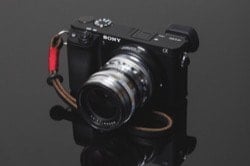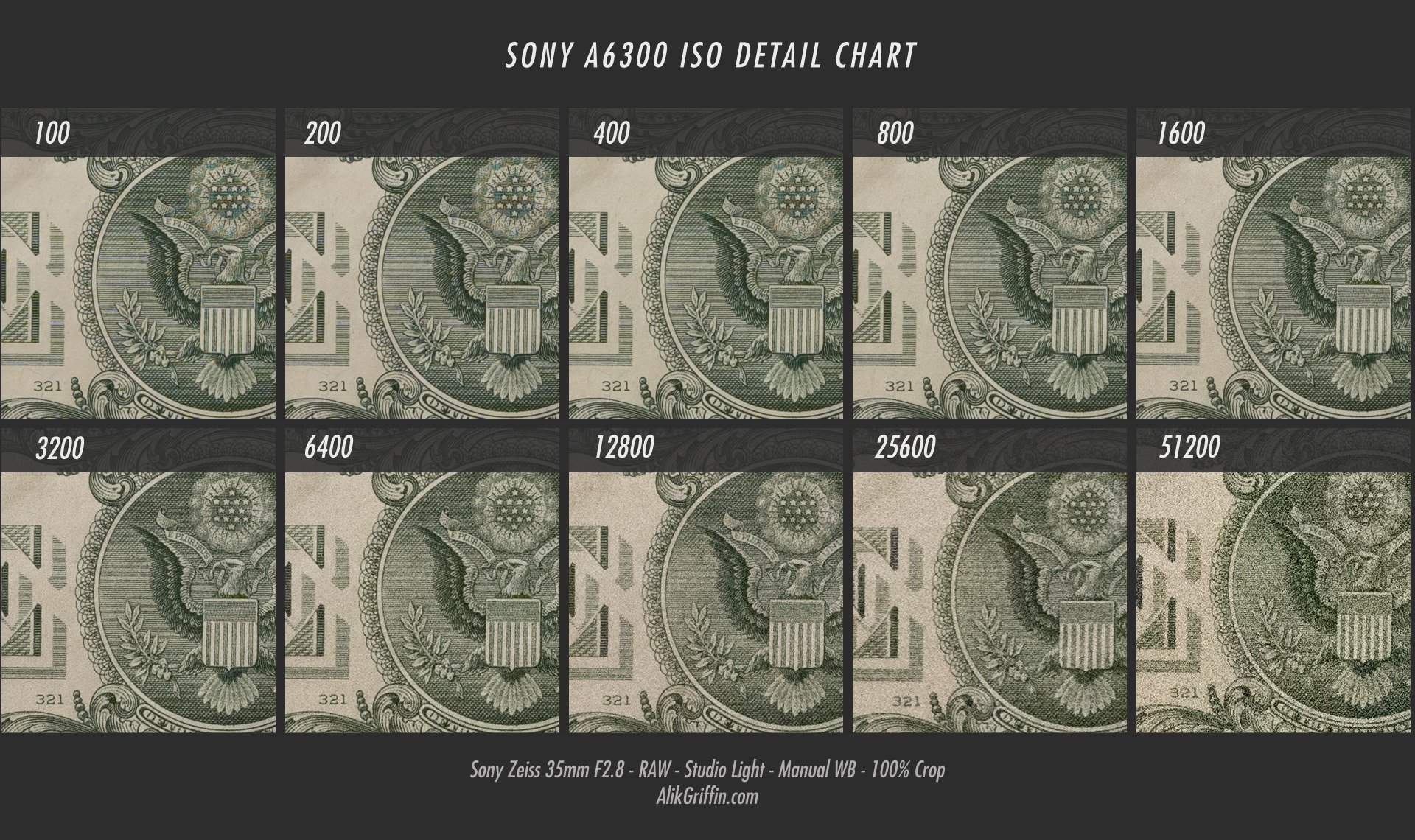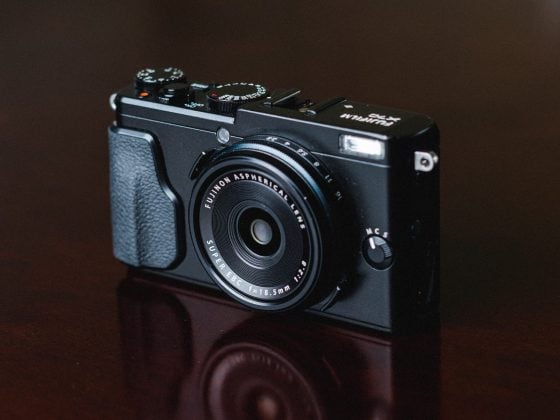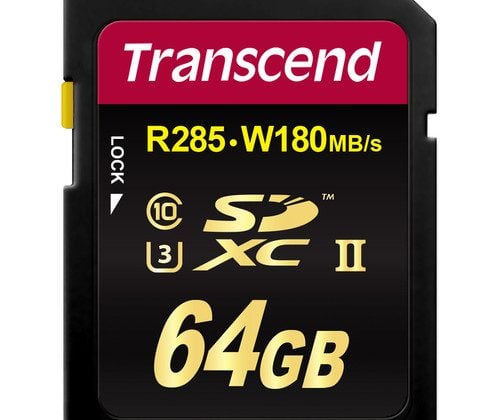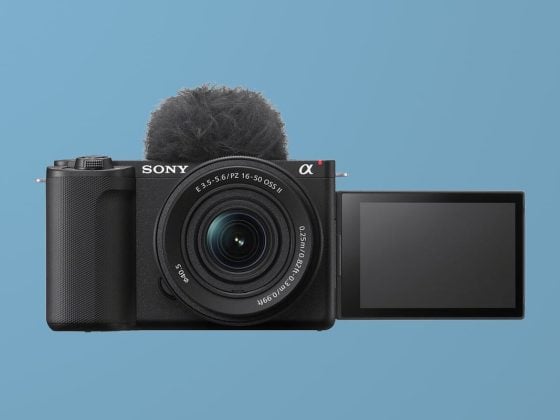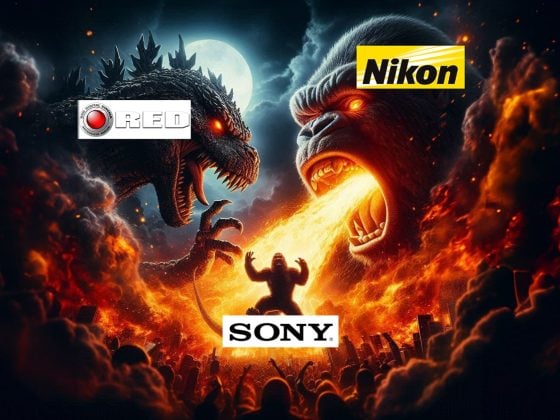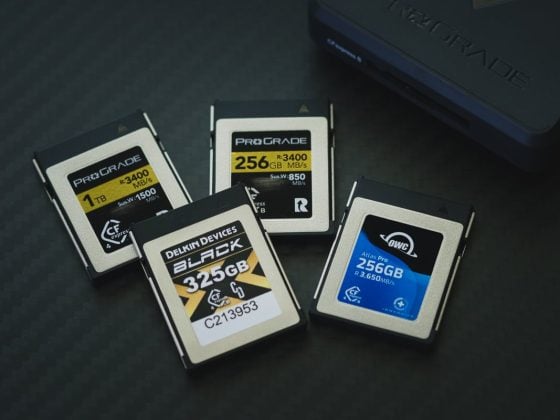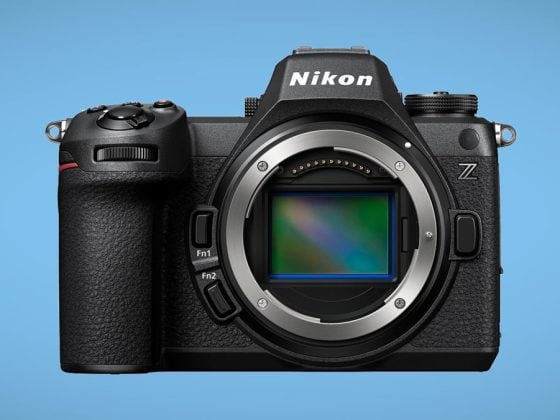The Sony A6300 is Sony’s flagship APS-C camera. Compared to the A6000, the camera features an all magnesium weather resistant body that feels much more rugged and solid in the hand. The camera also features a new sensor and the ability to shoot 4k. With Sony’s growing APS-C lens lineup, the A6300 is one of the most versatile yet affordable cameras on the market.
It’s also one of the first of a new generation of APS-C cameras that are closing the gap on full frame.
Sony A6300 Review
Camera Details and Prices
Sensor: 24.2MP APS-C CMOS
Processor: BIONZ X Image Processor
Continuous Burst: 11fps
Max Memory Card Speeds: 32MB/s
LCD Screen: 3″ 921.6k Dot Tilting
Viewfinder: 2,359,296 Dot / 120 fps
Focus: 425 Phase Detect / 169 Contrast Detect
Video: 4K100M 24p / 30p – XAVC S / S-Log3
HFPS: 120fps
Build: Weather Resistant / Magnesium Alloy
More Info
Fastest Memory Cards For The A6300
Must-Have Accessories For The A6300
Sony E-Mount APS-C Lens Guide
Sony A6300 vs A6000
A6300 First Impressions
I’ve put this review off for a while because I really wanted to get to know this camera and give it the most fair review possible, and this is partly because I’m not a huge Sony fan.
It’s taken me a while to really appreciate this camera and that’s not because it’s not a great camera, it is, I didn’t like it at first because it’s a Sony and doesn’t come setup very well, especially for manual lenses and it still has all those little annoying Sony quirks. I’ll go into some of this later.
Now after setting up the camera how I like it and getting used to it, it’s been great, especially with my manual Voigtlander lenses and a few of my full-frame E-Mount lenses. It’s just so small, so compact and the feel in the hand is simply unbeatable.

What I like
– Small, light, feels great in the hand.
– Easy to use (once set up and gotten use to).
– Amazing image quality with fantastic dynamic range.
– 4k Video
What I don’t like
– Not set up very well, especially for manual lens shooters
– Confusing menus with completely unnecessary features
– Poor APS-C native lens options
– Marketing hype overselling features
– Sony Colors
– Video files are stored on the memory cards in the most unintuitive, confusing, mindless way possible. It’s simply madness. And I think every Sony shooter will agree with me on this one. I’ve lost several priceless treasures after transferring over my photos and forgetting that there were hidden video files nested in bizarre folder locations before formatting. I mean common Sony, put everything in the same folder like every other camera on the planet.
Why I think the A6300 is a full frame killer
Back when I was shooting with the Canon 5Dmkii or the 7D, I feel like I could really feel the difference between the image quality between full frame and APS-C. When both camera RAW files were imported into my computer, I could usually tell which was the APS-C or the full-frame simply by how the image handled grain and dynamic range. You could do a lot more with the full-frame image. Fast forward several years and not only have the sensors improved dramatically, but also the lenses.
Now comparing the Sony A7r II and the A6300 (ignoring megapixels), I don’t see or even feel a real difference between the two images in terms of how they hold up to post-manipulation. I’m not saying there isn’t a difference, there definitely is, but the threshold of how far you can push and pull the A6300 image is extremely forgiving. Good enough for most situations, causing many of the advantages of full frame to become obsolete.
This is why I find myself picking up my APS-C cameras over my full frame cameras more and more, I’d say 90% of the time. The APS-C just creates a more accessible camera system that’s smaller and lighter and really what most people want when using mirrorless.
Camera Specs Overview
Other than the amazing sensor and autofocus speeds, the camera specs are nothing to write home about and are in fact significantly behind the competition.
I’ll point out a few.
The Bad
Memory Card Speeds: Memory card write speeds/buffer clearing speeds tops out at around 32MB/s. This is why you get that annoying pause after you take a photo and try to access the menu system. In contrast, the latest Fujifilm cameras can write at speeds up to 108MB/s. Over 3x faster.
LCD Screen: The Rear LCD screen feels old compared to the new X-Pro 2 at 921.6k Dots. The X-Pro 2 rocks 1.62 million Dots, that’s a massive advantage. I was really hoping to see an improvement here, especially given the resolution of our smartphones and the fact that this is supposed to be Sony’s flagship APS-C camera.
It’s not a huge deal but after using the X-Pro 2 for a while and going back to the A6300, you’re definitely bummed out a little by the lack of detail in the low-resolution screen.
The Battery Life: Battery life is good but nowhere near as good as a traditional DSLR when shooting stills. The good news is Sony allows you to set the auto-off feature to 10 seconds, which really helps if you’re not in the habit of turning off your camera after each use.
But it’s not terrible for a mirrorless. After a day of traveling and shooting around 700 photos and maybe 10 minutes of video my battery was still at about 35%. What’s with the new ‘Made In China batteries that Sony now ships with their cameras? The older ‘Made In Japan’ batteries they use to ship last even longer.
I wish Sony still shipped the Japanese batteries, as they were much better.
Heat: Although the camera shoots 4k, it’s only good when continuously shooting shorter clips; fine for most filmmakers who shoot one take at a time in relatively cool climates, but if you ever need to shoot a long performance like concerts or conferences, you’ll need to look elsewhere.
The Good
Although there are a lot of negative characteristics you’ll see me point out and mention, by no means do I want you to think I am bashing this camera. I actually really do love this camera. It’s hard not to. It’s close to being my favorite camera, maybe second to the Fujifilm X100T, and tied with the X-Pro 2. The A6300 or even the A6000 is also my #1 most recommended camera when people ask me what camera they should buy.
Here are a few features that are just awesome.
The EVF: This thing is gold. It now is capable of 120 frames per second and produces an image that feels so real. I also love the position of it and it much easier to use than cameras that have the EVF in the top center where your face oil ends up constantly smearing up your rear screen.
Autofocus Speeds: They are great, I no longer have to worry about missing focus or it not doing what I want. Although I don’t think it’s the best autofocusing camera out there. – When I say ‘they’ I’m referring to Contrast Detect and Phase Detection. More on this later.
Image Quality: I really love shooting with these Sony sensors. You always feel like you’re ahead of the curve. The low ISO and dynamic range is now so good, I almost never feel like I’m missing out on anything by not using my A7rII. In fact, shooting with 42 megapixels is annoying when it comes to post processing and I now only use full frame for landscape photography that I plan on printing huge.
And when it comes to shooting video I put my A7rII in Super 35mm mode anyway, so no advantage there.
Technical Review
Sensor Quality
It’s pretty well known that Sony makes sensors for most of the cameras out there and you won’t likely find a camera with a better sensor than a Sony camera. With every new sensor Sony puts out, I’m finding myself bracketing less and less. The dynamic range is fantastic and Sony bakes in a really nice sharp and crisp look into their RAW files.
This shot was taken with the Sony 16-35mm f4 FE lens.
Moire
There are some issues with Moire with this sensor but nothing out of the norm.
Here is a moire comparison to the Fujifilm X-Trans CMOS II sensor, which is nearly Moire free.
Diffraction
Because of the 24.2 megapixel APS-C sensor, you’re going to see the effects of diffraction at around f8. Although I find going to f11 is still acceptable for landscape photography while only presenting slight degradation.
This is one area where APS-C will never be able to outperform full frame.
ISO Performance
Previous generations of this sensor saw usable performance at ISO 6400. Typically what happens at ISO 6400 is you start to see some amp glow (the purple glow) around the image. It seems to be even more controlled with this sensor but I’m not sure if that’s from the sensor or from the new processor because the Fujifilm X-Pro 2 uses a slightly older version of the Sony sensor and also sees these same improvements.
The bottom line is that it’s good, not as good as a full frame camera, but then again full frame isn’t as good as medium format. So I find APS-C to be in this perfect place that’s more than acceptable for most people in most situations. I’ve yet to have low ISO performance be an issue. If it is, I can just use faster lenses.
Auto Focus
There is a lot of autofocus hype about this camera. When just shooting single photos, one shot at a time, I don’t feel like it’s all that much faster than the previous generation or even the competition. But I only have two native Sony lenses, the 35mm f2.8 and the 16-35mm so it’s possible they just focus slow? Don’t get me wrong, they are fast, I was just expecting something more from all the hype.
The continuous autofocus technology is the best I’ve seen. It’s actually pretty amazing. It’s so intelligent and does an extremely good job at keeping moving subjects in focus. For video I have no choice but to use my A6300 over any other camera.
Phase Detection vs Contrast Auto Focus
There are two types of autofocus a mirrorless camera uses. Phase Detect and Contrast Detect.
Phase Detect
When Sony says they have the world’s fastest autofocus I believe they are referring to the top speed of their phase detect autofocus. This is used in your typical well-lit situation – outdoors, or indoors with good ambient lighting.
Phase Detection is very fast, I guess faster than the competition but it’s really hard to feel the difference when you’re dealing with milliseconds of improvements. They also have an insane amount of phase detection focus point at 425. This is probably why the continuos autofocus is so good because it can use multiple points to literally 3d track almost any part of the frame.
Contract Detect
Contract Detect autofocus is used in high-frequency situations (think blown-out white snowy landscape) or in low light. Typically this isn’t used much by the camera unless you turn off the autofocus illuminator or focus outside the range of the autofocus illuminator.
Personally, I find the autofocus illuminator to be so bright that it’s completely unusable. It really bothers people you’re shooting and especially bothers my eight-month-old baby girl and I’m forced to turn it off.
This means that in low light situations without the Autofocus Illuminator, the camera will mostly be using the Contrast Detect autofocus.
While Phase detection is amazing on the Sony A6300, Contrast Detection is definitely not the world’s fastest and is noticeably slower than the Fujifilm X-Pro 2. The camera will seek for a bit longer and miss a bit more. That being said, it’s still really fast and doesn’t seem to hold me back from still getting great shots in low light.
When I mention I don’t like the marketing hype and overselling of features by Sony, this is what I’m talking about. Aside from autofocus tracking and comparing it to the X-Pro 2, the speed of Phase detection focus is not noticeably faster (although on paper it probably is), however, when using contrast detection autofocus the X-Pro 2 is noticeably faster. So if we were to look at the average of the two types of focus speeds, the X-Pro 2 is technically faster from my experience with my lenses.
Of course, please take this with a grain of salt because autofocus speeds often are a variant of the lenses you are using and I’m not sure if the Zeiss 35mm f2.8 lens is a fast-focusing lens by Sony and I was using the 35mm f2 lens by Fujifilm which currently is one of their fastest focusing lenses.
Autofocus Speeds Bottom Line
The bottom line is the autofocus speed is amazing. It used to be that a DSRL could always outshine a mirrorless camera when it came to autofocus speeds, I simply do not see that anymore and with the A6300, I no longer ever have to worry about focus missing or not performing well enough. It’s great!
If those using the A6300 for video, for the first time I feel like I can actually turn on continuous autofocus and feel comfortable about the way the camera will perform.
A6300 Video Capabilities
The video on this camera is impressive. You’re still limited to 8-bit MP4 compression, but with 4k100M you’ll at least be getting a lot of information. This is the primary reason I bought this camera in addition to my X-Pro 2.
The HDMI out is clean 8-bit 4:2:2 which isn’t terrible. And the camera is also capable of recording 120 fps at 100M with a 1.1x crop factor.
The camera also features a 3.5mm mic input jack and you can also use Sony’s hotshoe mic adapters.
We can also now use S-Log 3. However, this is more of a professional setting and I wouldn’t use it if you’re just an average Joe shooting your kids and family at the soccer game.
Camera Quirks
The camera has a few quirks that took me a little while to get figured out and to work around. I’ll go over some of them.
Setting Up The A6300 For Manual Lenses
The camera does come set up to use manual lenses at all. I’m referring to the manual lenses that do not have electronic communication with the camera. The Loxias would be fine, but any adapted Leica or Voigtlander lens will need menu adjustments.
Just an oversight by Sony and easy to remedy, but it can leave you confused for a moment.
Here are a few examples.
– Camera will not fire with manual lenses, you have to go into the menu and turn Release w/o Lens to Enable. I’m not sure why this is even a setting. It should always be set to enable like every other camera on the planet and we would get one less useless feature cluttering up the terrible Sony menus.
– Manual focus assist does not work with third party adapted lenses. To get around this you can set and use the Focus Magnifier to C1. Page 7 in settings. The second tab.
– Manual Focus Peak colors are too Intense even on the lowest setting. You have three options, Low, Mid, High. But they will all make it very difficult to see your image even when using Low.
The Camera Seems To Over Expose
I feel like the camera naturally shoots a little bit to hot. Not a huge deal for RAW shooters but if you’re shooting video I’ve seen it be a problem. But this is common; Fujifilm cameras seem to do the same thing not just quite as extreme.
Because of this I almost always have my exposure comp dial set to -1 to -1.5.
Exposure Comp Dial Not Setup
You’ll find it in the Dial/Wheel EV Comp. On page 7 of the second tab. It comes set to off, but you should change it to Dial, or Wheel. Whatever suites your needs. But you must set this up because the camera will shoot too hot and you’ll need to control your exposure comp dial.
Sony Colors Look Too Digital
This is of course a matter of taste and there are simple workarounds. I almost always use either VSCO film simulators or the RNI simulators to get around this and it’s made processing a much better experience. Most of these photos in this review were actually treated with VSCO film looks.
Look And Feel Of The Images
I have never loved the look and feel of Sony images. Greens kind of feel neon, and warm tones feel too pink, it’s almost as if the image has a yellow tinge to it maybe. I don’t know, it’s hard to describe. But this could all be because of the white balance and exposure, or that I usually shoot with Fujifilm and have a history with Canon.
Every time I rent a Canon or Nikon and go back to a Sony camera, I feel like I’m taking a huge step back when using auto white balance and with my exposure accuracy, so this is not A6300 specific. You can work to get around this so it’s not a huge deal. I try to set my white balance to the correct temperature of the scene and I try to use my exposure comp dial to get the correct exposure as much as possible.
I also feel like if you really want good image quality you have to either use Sony full frame lenses or third party lenses as Sony does not yet make great APS-C lenses. But they will soon.
Sony A63000 – The Bottom Line
If this camera wasn’t so dang fun to use and didn’t have such amazing image quality I wouldn’t love it like I do. The actual camera hardware is so far behind and the menu systems and colors profiles are still very poorly designed. But, nothing is perfect so all those things are forgivable especially at this price point.
My favorite thing about the A6300 is it does what it’s meant to do perfectly. It wasn’t designed to be a landscape camera, or a studio camera, or a sports camera, but instead it’s a jack-of-all-trades. It can do everything very well and can handle itself in any situation. It really is the best camera in its class/price range and until maybe the Fujifilm XT2 comes out there really is no other option.
The only problem is Sony hasn’t yet really committed to their APS-C lenses and the current options kind of suck; which is why I use Voigtlander lenses. However, rumors are suggesting that Sony will start making faster APS-C lenses soon.
If you’re looking for the best travel and adventure camera, this is it! Buy this camera! 🙂
Is the A6300 the best APS-C camera?
No, not by a long shot. The Fujifilm makes a much better APS-C system, but I have to say some Fujifilm cameras might not be for everyone and right now the only camera they have that’s better than the A6300 (minus 4k) is the X-Pro 2, which isn’t for everyone.
This really makes the A6300 a great option and a great camera. It’s more fun than the Canon 7DII with better image quality, the Nikon D7200 image quality without an optical low pass filter is kind of a mess and the Samsung NX-1 although great, has no great lenses.
Sony A6300 Sample Images
| **This website contains affiliate links. We will earn a small commission on purchases made through these links. Some of the links used in these articles will direct you to Amazon. As an Amazon Associate, I earn from qualifying purchases. |

